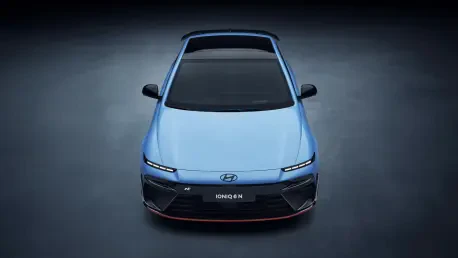I’m thrilled to sit down with Christopher Hailstone, a renowned expert in energy management, renewable energy, and electricity delivery. With his deep knowledge of grid reliability and security, Christopher offers a unique perspective on the evolving automotive landscape, particularly in the realm of electric and hybrid vehicles. Today, we’ll dive into Hyundai Motor Co.’s ambitious plans for growth, their push into eco-friendly technologies, and how they’re tailoring solutions for diverse global markets. Our conversation will explore their strategies for expanding hybrid and electric vehicle lineups, pioneering new technologies like extended-range EVs, and their vision for a sustainable future in mobility.
What are Hyundai’s overarching ambitions for the coming years, and how do they plan to achieve such significant growth?
Hyundai is setting some pretty bold targets for the next few years. They’re aiming to boost their annual sales by over 30%, going from 4.14 million units in 2024 to 5.55 million by 2030. Alongside that, they’re targeting an operating margin of up to 9% by the end of the decade. The strategy hinges on heavy investments in green technology to navigate challenges like the U.S. tariffs on imported EVs and the global slowdown in EV demand. They’re putting around 77.3 trillion won—roughly 55.7 billion USD—into this vision between 2025 and 2030, with a big chunk for research, facilities, and strategic ventures. It’s about building a diversified portfolio and localized operations to stay competitive.
Can you elaborate on Hyundai’s plans to expand their hybrid electric vehicle lineup and what that means for consumers?
Absolutely. Hyundai is planning to more than double their hybrid offerings, jumping from eight models today to 18 by 2030. This expansion will cover a wide spectrum—everything from entry-level cars to mid-size, large, and even luxury vehicles. It’s a move to cater to different budgets and preferences, making hybrids more accessible. Their premium Genesis brand is also stepping into the game with its first luxury hybrid next year, followed by a more affordable option. This approach ensures they’re meeting diverse consumer needs while pushing for sustainability.
How is Hyundai tailoring electric vehicles for specific regions, and what’s driving this strategy?
Hyundai’s approach to EVs is very market-specific, which is smart given the varying demand and regulations globally. In Europe, they’re launching the Ioniq 3 next year, previewed at the IAA Mobility 2025 event in Munich alongside a small EV concept called “Concept Three.” For China, they’ve got a compact electric sedan slated for 2026 following this year’s Elexio compact SUV launch. In India, a mini electric SUV is on the horizon for 2027, backed by a localized supply chain. This strategy is about addressing regional needs—whether it’s compact cars for urban Europe or affordable options for emerging markets like India—while tackling demand stagnation.
Hyundai is introducing an extended-range electric vehicle in 2027. Can you explain how this technology works and its potential impact?
The extended-range electric vehicle, or EREV, is an interesting hybrid of sorts, set for a 2027 debut. Unlike a standard EV, an EREV has a small combustion engine that acts solely as a generator to recharge the battery when it runs low, extending the driving range. The vehicle still primarily runs on electric power, but this setup directly addresses range anxiety—a major concern for many potential EV buyers. It’s a bridge technology that could ease more drivers into the electric space by offering the reassurance of longer trips without frequent charging stops.
Beyond EVs and hybrids, what other sustainable technologies is Hyundai investing in for the future?
Hyundai isn’t putting all their eggs in one basket. They’re diving into software-defined vehicles, or SDVs, which are cars that can be updated and customized through software, much like a smartphone. This could revolutionize user experience and vehicle longevity. They’re also committed to hydrogen-powered fuel cell EVs, which emit only water and could play a big role in heavy-duty or long-haul transport. These technologies show Hyundai’s broader vision to be a leader in future mobility, not just through electrification but through diverse, innovative solutions.
With Hyundai aiming for 60% of their global sales to be eco-friendly models by 2030, how are they planning to make that a reality?
That’s a massive target—3.3 million eco-friendly vehicles out of 5.55 million total sales by 2030. Hyundai’s plan involves ramping up manufacturing big time. Their Georgia plant in the U.S. will scale to 500,000 units annually by 2028, the Pune plant in India will add 250,000 units this year, and a new innovation plant in Ulsan, South Korea, opens next year with flexibility for multiple models. It’s about capacity, but also about pushing a diverse lineup of hybrids, EVs, and other green vehicles to meet that 60% goal. Localized production helps with cost and supply chain efficiency too.
What’s your forecast for the future of eco-friendly vehicles in the automotive industry, especially with companies like Hyundai leading the charge?
I’m optimistic about the trajectory of eco-friendly vehicles, especially with players like Hyundai driving innovation and investment. By 2030, I expect EVs and hybrids to dominate new car sales in many markets, spurred by stricter emissions regulations and better infrastructure like charging networks. Hyundai’s focus on region-specific models and technologies like EREVs could accelerate adoption by addressing practical concerns. The bigger picture is a shift toward mobility as a service—think shared, connected, and sustainable transport. If Hyundai and others keep balancing profitability with green tech, we’re looking at a transformative decade ahead.









